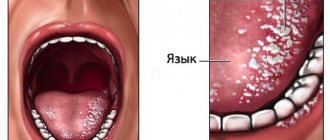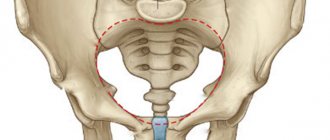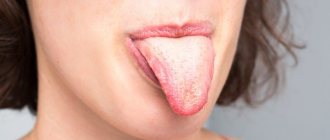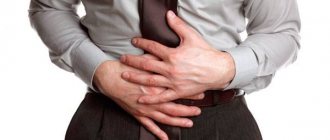What is anemia?
Anemia is a low level of hemoglobin in a woman's blood. If its value is less than 110 g/l, then it is worth talking about the development of pathology. The norm is 120 g/l.
Hemoglobin is a protein whose structure is supplied with iron. The protein is located in red blood cells. Its main function is to participate in gas exchange (the connection of molecules with carbon dioxide). As a result of this process, carbon dioxide is carried away from the cells to the lungs, where it is exchanged for oxygen. After this, oxygen is supplied to the remaining tissues of the body.
With anemia, a woman begins to experience hypoxia, expressed by certain signs. The result of violations is a failure in the entire functioning of the body.
Reference! Hemoglobin is directly related to red blood cells, therefore, when it decreases, the formed elements of the blood significantly reduce their quantity.
Anemia can be diagnosed in three stages of its development:
- Easy. The level of hemoglobin in the blood decreases to 110 or 120 g/l. Whereas a moderate degree is characterized by its content in the range of 70 - 90 g/l.
- Reduced number of red blood cells. Their norm in the blood is 3.5 - 5 * 10 to the 12th power of liters. This indicator may vary depending on the individual characteristics of the young mother: age, physical activity.
- Decreased hematocrit level. When iron saturation in the blood decreases, anemia occurs. The normal rate is 35 - 45%.
Anemia can be acute or chronic. Acute can occur after a large loss of blood during or after childbirth. Chronic occurs gradually, long before childbirth, and is carried over more simply and easily.
Reasons for the appearance of a young mother
Anemia can occur due to increased destruction (including loss) of red blood cells or due to a decrease in the rate of their formation. The main reasons can be identified as follows:
| Cause | Why is this happening? |
| Anemia that existed before pregnancy | In this case, iron reserves in the body are negligible, and blood loss during childbirth (on average 300 ml) aggravates the situation and again leads to a decrease in hemoglobin levels. |
| Massive blood loss during and immediately after childbirth | This is often observed after a cesarean section, with pathology of the placenta, a large number of ruptures, etc. In such situations, cases of blood transfusion are common; the indication for this is a decrease in hemoglobin level below 70 g/l. |
| Poor nutrition after childbirth | Often new mothers sharply limit themselves for various reasons. Some are afraid of causing allergies in the baby, others are trying to lose weight. The result is the same - anemia and all the ensuing consequences. |
| Heavy menstruation after childbirth | Normally, the amount of blood lost during one period is no more than 150 ml. If the volume is increased (clots, very long-lasting, etc.), the body does not have time to compensate for the loss. As a result, hemoglobin gradually decreases. This is especially common if a woman has uterine fibroids, endometriosis, etc. Anemia and heavy periods after childbirth are frequent companions of each other. |
| Chronic gastrointestinal diseases | A similar condition can be caused by various chronic diseases of the gastrointestinal tract (gastritis, colitis, ulcers and others), spleen (if it is enlarged), and bone marrow. You should know that cancer pathology is always accompanied by anemia. |
| Infectious diseases | During all infectious diseases, in most cases there is also a decrease in hemoglobin levels, which is restored some time after recovery. |
There are many reasons that can lead to anemia in a woman after childbirth, in addition to those listed. Only a doctor after examination can determine the true cause.
Signs of pathology
The most reliable sign of anemia in a woman is the pallor of her skin. At the same time, she gets tired quickly and wants to sleep all the time. It is accompanied by constant weakness, increased sweating and dizziness.
Important point! After childbirth, this condition brings a lot of anxiety to the woman. Moderate or severe degree of pathology is characterized by rapid heartbeat and low blood pressure.
In addition, you may find the following:
- dullness of hair, its weakness;
- fragility and separation of the nail plate;
- “jams” in the corners of the mouth;
- dry skin over the entire surface of the body;
- shortness of breath even with slight physical exertion;
- lack of air when walking vigorously or when performing simple physical exercises.
The stage of anemia can be determined by the following general characteristics:
- A mild degree can appear and pass without noticeable changes in a woman’s well-being. Mommy, as a rule, has no worries, and only tests can reveal the picture of the processes occurring in the body.
- The average degree is characterized by prolonged postpartum fatigue, a pale appearance of the face and constant dizziness.
- A severe degree indicates irreversible changes in the body. In addition to all of the above symptoms, a woman may also periodically experience short-term fainting, a reddened tongue, and signs of suffocation and arrhythmia. Nails become very peeling and hair splits.
How to prevent it?
The best prevention and treatment is to adhere to a proper diet. You should worry about this from the first days of pregnancy. The diet should contain sufficient amounts of iron, vitamin B 12 and folic acid.
- You need to adjust your diet so that it is as rich in nutrients as possible.
- Be sure to eat beef, cereals, fruits, herbs, vegetables and dairy products.
- Systematically do a general blood test for monitoring and diagnosis.
- Treat diseases associated with iron loss in a timely manner.
- Another reason for this disease may be short intervals between births. The body does not have time to recover, try to allow at least three years to pass between births.
Read also: Reasons why knees hurt after childbirth
With proper nutrition and treatment, this protein is restored in the body quite quickly. But it is much more difficult for a woman who has given birth and a nursing mother to do this, because now she must provide iron to two organisms. Therefore, its level must be constantly monitored and maintained.
Diagnosis of anemia
If she feels unwell and discovers signs of anemia, a woman can make an assumption about the development of pathology. But an accurate diagnosis of anemia can only be made by taking a general detailed blood test. In this case, the following deviations should be recorded in such an analysis:
- decreased levels of hemoglobin, hematocrit and red blood cells;
- increase in ESR;
- the appearance of microcytes, immature and defective red blood cells that arise under conditions of iron deficiency;
- changes in many other indicators, such as distribution by volume of blood cells and others.
More on the topic
Symptoms and treatment of anemia during pregnancy
How to increase hemoglobin after childbirth for a nursing mother
Anemia 1st degree during pregnancy
Can there be black stool after childbirth?
Blood sugar during pregnancy: high and low levels
Attention! An iron biochemistry test will also help in making a diagnosis. The amount of iron contained in the blood plasma will indicate the degree of pathology and methods of possible treatment.
Signs of anemia during breastfeeding
In general, it is safe to say that the signs of anemia in breastfeeding women will be the same as the signs of anemia in ordinary people. For nursing mothers, this is primarily pallor of the skin and ears, constant headaches, inability to maintain attention and concentrate, as well as severe fatigue and constant drowsiness.
Anemia during breastfeeding in a mother: symptoms - what to do if it was discovered by the woman herself? The first step is to take a blood test to determine the level of hemoglobin in the blood. After this, the doctor will determine the stage of anemia and from there prescribe the appropriate treatment.
The woman herself can also take a step towards curing anemia. To do this, you need to adjust your own diet. What does it mean? Without fear of harming the baby, a woman can eat iron-rich foods such as liver, apples and beef. In cases where anemia occurs at a more severe stage, it is necessary to start taking iron-containing medications, as indicated by the doctor.
Treatment of anemia after childbirth:
- drugs
To increase iron levels in the blood, a wide variety of drugs are sold in pharmacies. They simultaneously help increase hemoglobin. Such drugs are generally allowed both during pregnancy and during breastfeeding. The most popular are totema, maltofer, ferronal, and jeferol.
Most of these preparations contain not only iron, but also additional microelements that promote better absorption of iron. These include vitamin C, B12, copper, folic acid and manganese. Depending on the iron contained in the perarat (divalent or trivalent), digestibility will be determined.
Most often, doctors prescribe tablet forms of drugs to their patients, but intramuscular injections are also used (in the case of treating moderate or severe pathology).
Anti-anemia medications can cause bowel problems: constipation occurs or the color of stool changes, usually becoming darker. In some cases, while taking medications against anemia, doctors recommend using laxatives such as lactulose.
As for the use of dietary supplements, they are prescribed mainly for the prevention of relapse or as a complex remedy together with iron-containing drugs.
- Lifestyle
Of course, a woman’s diet plays a huge role in iron levels in the blood. Her diet should always include foods rich in iron. This includes all red foods. She must definitely eat meat in the form of beef, pork, liver (better beef than chicken), buckwheat, legumes, fresh fruits and vegetables.
Reference! Any food products should be included in a woman’s diet in moderation. An excess of one product or another can cause an allergic reaction in both the mother and her baby.
A woman should walk in the fresh air more often, and do good breathing practice combined with light jogging or fast walking. You can do full exercise in the park or on the lake. In this case, the oxygen saturation of the body will be very rich.
When indoors, you should ventilate it regularly. It is necessary to organize wet cleaning at least once a day. Ideally, you need to clean it at least once every 3 days.
- folk methods
Traditional methods of treating anemia have also proven themselves:
- Take equal parts of nettle leaves, dandelion roots and yarrow flowers. Brew the mixture in boiling water for 2 - 3 hours. Calculate as 1 - 2 tbsp. for 300 - 400 ml. water. The infusion should be drunk for a couple of weeks, half a glass daily.
- Take one medium carrot, radish and beetroot, chop them on a fine grater and squeeze out the juice. For several weeks you should drink 1 tbsp. 3 times a day.
- Mix 50 - 70 g of hawthorn fruit and 250 ml. red wine (preferably dry). Infuse the composition for about 3 weeks and store in a cool, dark place. During the month you should drink 3 tbsp. 3 times a day after meals.
- Take a small ripe pomegranate and squeeze the juice out of it. Mix juice with 200 ml. red wine and add 1 tablespoon of infusion. for 3 weeks after each meal.
- Infuse 50 g of medicinal lungwort in 200 ml of alcohol for about 3 weeks. Strain and use 2 tbsp. during the day for 2 - 3 weeks in a row.
- For 1 l. boiling water put 2 tbsp. l. rose hips, 2 pieces of lemon and the same amount of orange and leave in a thermos for 3 days. Drink 200 ml. in the morning, after adding 0.5 teaspoon of honey. The course is 10 days.
- Dissolve 30 drops of 10% propolis tincture in water or tea. Take 3 times a day.
Postpartum anemia is a very unpleasant process that interferes with raising a child and negatively affects the well-being of the mother. To cope with the symptoms of pathology and improve the iron content in a woman’s blood, many conditions must be observed: eat right, lead an active lifestyle and take a special set of drugs that restores and normalizes iron in the blood.
Especially for beremennost.net Ira Romaniy
Forms and signs of the disease
Iron deficiency anemia is divided into 3 forms of the disease.
The first stage is considered mild anemia. With this form, hemoglobin is slightly reduced. A mild form of the disease does not require drug treatment. In most cases, the mild form of the disease is asymptomatic and can only be detected through laboratory blood tests.
Anemia may be the cause of poor health after childbirth. What is anemia and how does it occur? During pregnancy, a woman becomes “bulkier”, in particular, the total volume of blood in the vessels increases, but this happens due to an increase in the liquid part of the blood - plasma. As a result, the blood thins out: in one cubic milliliter there are fewer red blood cells - red blood cells, which carry oxygen to all organs and tissues, that is, they participate in the most important processes of tissue respiration. In addition to the reduced content of red blood cells in the blood, a decrease in hemoglobin, which contains iron, is also detected. This condition is called physiological, that is, natural, anemia in pregnant women.
The diagnosis of anemia is made quite often during pregnancy. In this case, a clinical blood test shows a decrease in hemoglobin and the number of red blood cells. The norms for these indicators may vary depending on the determination method. On average, hemoglobin levels in the blood are as follows: 110-90 g/l for mild anemia, 90-70 g/l for moderate anemia, less than 70 g/l is typical for severe anemia (in many cases, a clinical assessment of the woman’s condition is more important, and not the exact numbers of the blood test).
During childbirth, a woman loses at least 200-300 ml of blood (with pathological childbirth, blood loss can be much greater). She then continues to lose blood through postpartum discharge for another 7-10 days. All this contributes to anemia. But a healthy body can quickly overcome this situation by starting increased hemoglobin synthesis and red blood cell production. However, unfortunately, healthy women are becoming increasingly rare. In many situations, the body cannot cope with the developed anemia on its own. How to treat this disease with folk remedies.
The causes of iron deficiency may be the following: iron-poor food; blood loss due to renewed menstruation, bleeding gums, etc.; poor absorption of iron in the intestines; breastfeeding and therefore a greater need for iron. Women will need consultation and, possibly, treatment from specialists - a gynecologist, gastroenterologist, dentist, hematologist.
With anemia, there is a general weakness, decreased performance, absent-mindedness, sometimes drowsiness, headaches may appear after overwork, and dizziness. Severe anemia may cause fainting. The skin becomes pale, dry, flaky. Hair loses its shine, becomes thinner, breaks easily, and thins. There may be characteristic changes in the nails: they become thin, matte, easily peel and break. The degree of anemia depends on the duration of the disease, age and general health of the woman.
Of course, these symptoms do not specifically indicate anemia and can be either a consequence of natural fatigue or signs of many other diseases. However, if these symptoms appear, a blood test is necessary.
Here is one woman's story:
“I never imagined that this could happen. After giving birth, I was very tired, literally falling off my feet. I really wanted to sleep, I didn’t have enough strength for anything, I didn’t even want to eat. I thought that this was a normal state after childbirth - I would rest, lie down, and everything would be restored. It did not recover, the milk began to disappear. I went to the gynecologist. After the examination, I donated blood for analysis, the hemoglobin turned out to be only 95. After treatment for 3 weeks, I became as good as new, and the hemoglobin rose to 120. There was more milk, and everything got better for us.”
To overcome anemia, the body must get enough iron from food. In addition, if a woman is breastfeeding, she is forced to strictly follow a diet to avoid intestinal colic and allergic reactions in the baby. In each case, the menu is selected individually. There may also be a need for drug treatment. As a practicing physician, it is recommended to use medicinal plants and their infusions for the treatment and prevention of iron deficiency anemia.
Iron produces hemoglobin in erythrocytes (red blood cells). Hemoglobin transports oxygen through the body's tissues. If there is little iron in the body, then the level of hemoglobin decreases, as a result of which tissues and organs do not receive oxygen, which gives us strength.
“Anemia” is a decrease in hemoglobin in the blood. Usually, with anemia, the content of other blood components, including red blood cells and serum iron, also decreases. For a healthy adult woman, the norm is: hemoglobin - 120-140 g/l, red blood cells 3.1-5.0 million/μl, iron - 50-175 μg%.
The most typical, widespread and most common for women after pregnancy and childbirth is iron deficiency anemia. This condition causes pallor, fatigue, dizziness, constant fatigue, shortness of breath, drowsiness, palpitations, taste disturbances, interruptions in heart function, fragility, curvature, striation of nails, hair loss - all these symptoms do not go away on their own.
Why does anemia occur?
Even if you did not suffer from anemia during pregnancy, this does not mean that you will not develop it after childbirth. And if you had anemia, then it will not go anywhere. What are the reasons for anemia? There are several factors. First of all, this is an overconsumption of iron during the third trimester of pregnancy, as the fetus continues to develop and the placenta and uterus enlarge. Iron is needed not only for the formation of red blood cells, but also for the formation of organs and fetal tissues. In the last months of pregnancy, iron reserves are also needed in the child’s liver, spleen, and bone marrow, so that these organs can function fully in the future. From the first days of pregnancy until childbirth, a woman loses approximately 1000 mg of iron for the needs described above. The average amount of iron saved (due to the absence of menstruation) and absorbed (taking into account the increased absorption of iron during pregnancy by 2.5-3.5 mg per day) is about 800 mg. In addition, during childbirth, the body suffers blood loss of about 300 ml, which also aggravates iron deficiency. Cesarean section increases blood loss even more significantly. Therefore, a woman in labor should begin using medications containing iron while still in the maternity hospital.
After pregnancy, many women feel the urge to immediately get rid of those extra pounds, and they can’t think of anything better than a diet. Even if you cannot breastfeed, do not restrict yourself in nutrition the day after giving birth, even after a month. Pregnancy is a serious stress for your body. During lactation, iron continues to be lost, only with milk. Of course, these losses are not as strong and noticeable as during pregnancy, but they are also significant. With a lack of iron in a woman’s body, not only the mother begins to suffer, but also the child, who receives this element only through breast milk. The child may also develop anemia, which will immediately affect the child’s growth and development.
As a result of a small amount of iron in human food or significant consumption of this element (during childbirth, pregnancy, caesarean section), iron deficiency anemia is formed. The level of serum iron decreases, which leads to the consumption of iron reserves in the organs and tissues of the expectant mother.
Diagnostics
Tests to detect anemia are not required for every woman who has given birth, so you should contact your physician yourself, who will refer you for the necessary testing. First of all, you will have to take a general blood test and a biochemical blood test. Further, after treatment is prescribed, these tests will have to be repeated 1.5 weeks after the start of taking the drugs to determine the effectiveness of treatment and after a month to monitor the rise in hemoglobin levels. In the future, you will need to monitor your iron levels once every 3 months.
Treatment
Depending on the degree of anemia detected and the patient’s consciousness, treatment can take from one month to six months.
How to compensate for iron deficiency? The very first and most important thing is a rational, balanced diet and a diet rich in vitamins C, B, folic acid, and iron. With anemia, the patient often has no appetite. Don't force yourself to eat, as this will only decrease your appetite even further. Just include a variety of delicious foods that are rich in nutrients in your diet. Different foods contain different types of iron compounds. Meat contains divalent iron, which is best absorbed by the human body; diversify your table with meat.
Necessary products are: lean meat, fish, cottage cheese. The diet should also include carbohydrates, which contain cereals, vegetables, fruits, and berries. Plant foods are very rich in vitamins, which the body needs so much. Plant foods contain many vitamins, which the body really needs now.
To get more B vitamins, you should include in your diet dishes made from baker's and brewer's yeast, meat, fish, liver, wheat and rice bran, cottage cheese, and egg yolk. No less important is vitamin C, which is abundant in rose hips, black currants, and lemon.
To awaken your appetite, consume a sufficient amount of extractives and a normal amount of table salt. In other words, eat meat, fish and vegetable broths and add salt to taste.
But nutrition alone will not cope with anemia; the main role in treatment is given to drugs containing iron. Mostly iron supplements are prescribed in tablets and capsules. Injections are used only for acute anemia, with large blood loss during childbirth or with intolerance to iron supplements in tablets. Injections are not used constantly, they are only used to relieve an acute condition - no more than a month, after which the patient is transferred to drugs in the form of tablets.
You can either write your own.
In the first months, with the birth of the child, the young mother feels tired, lack of strength, irritability, drowsiness, and mood swings. Often these. And maybe there is no reason to worry, but it’s better to get checked. After all, anemia after childbirth is characterized by the same symptoms.
The fact is that during childbirth, blood loss is inevitable. During normal labor, this loss can range from 300 to 500 ml, and during complicated labor, up to 1000 ml. If we add to this the low level of hemoglobin in the blood in the last months of pregnancy, this often leads to this disease. If the form of this disease is severe, then in some cases death occurs not only for the child, but also for the mother. Therefore, you should take this problem very seriously and get tested regularly.
Anemia is a decrease in hemoglobin levels. A general blood test determines the number of red blood cells and hemoglobin (contained in red blood cells and responsible for transporting oxygen; it contains iron). It is considered normal if these indicators are as follows: 120-140 g/l - hemoglobin; 3.1-5.0 million/μl - red blood cells; 50-175 mcg% - iron. If these indicators are 20% lower than normal, then grade 1 anemia after childbirth is diagnosed, when a decrease of 20-40% is grade 2, and grade 3 is more than 40%.
This is due to the fact that in the last months of gestation, the female body releases a lot of iron for the development of the fetus.
And blood loss only makes the situation worse. Also, during lactation, iron is lost through mother's milk. And if a woman goes on a diet in order to lose weight, or eats only vegetarian food, then not only the mother, but also the baby may suffer from this. He will also develop this disease, which will affect his growth and development.
Every woman wants to quickly regain her former shape, but do not forget about the health, first of all, of the child. After pregnancy, the female body is severely depleted. And if you are worried that by eating only selective foods, you will also save your baby from colic, then this is not so. Nutrition should be complete and rich in healthy elements.










